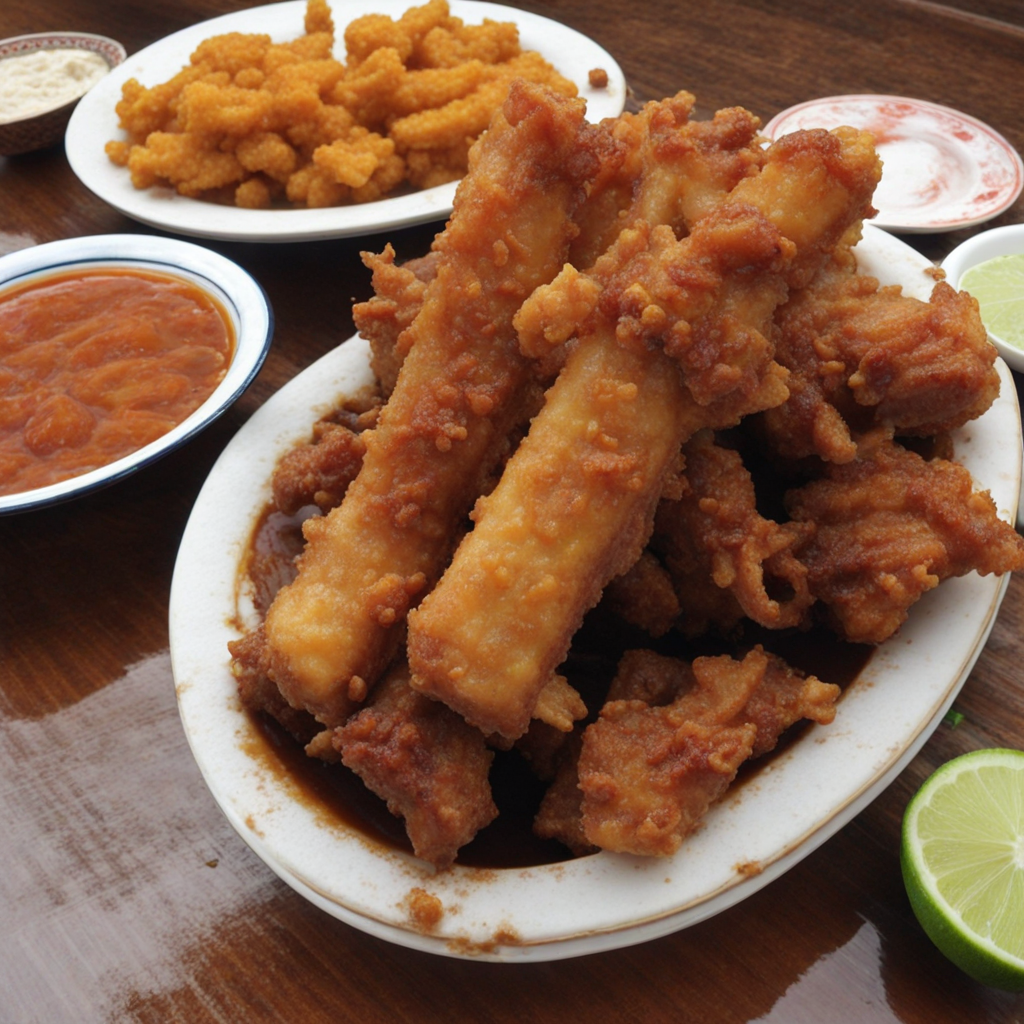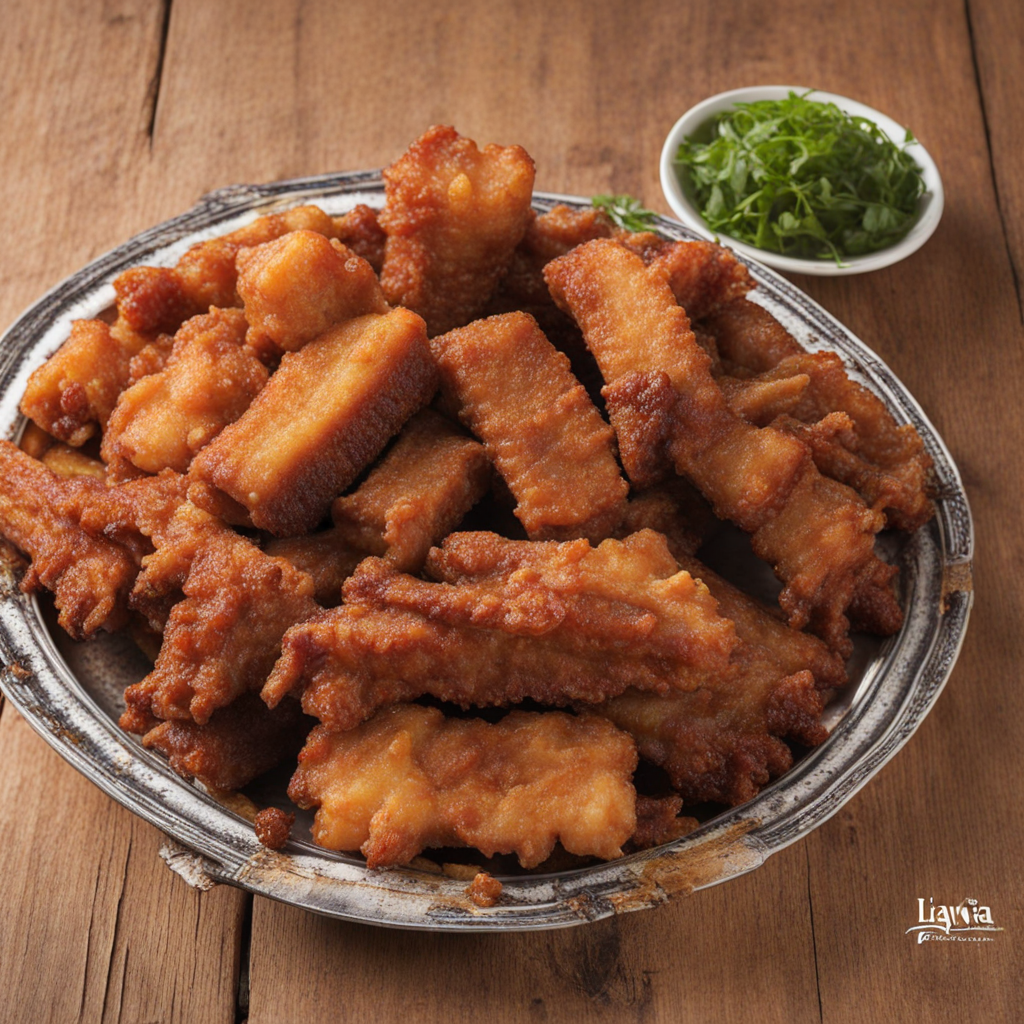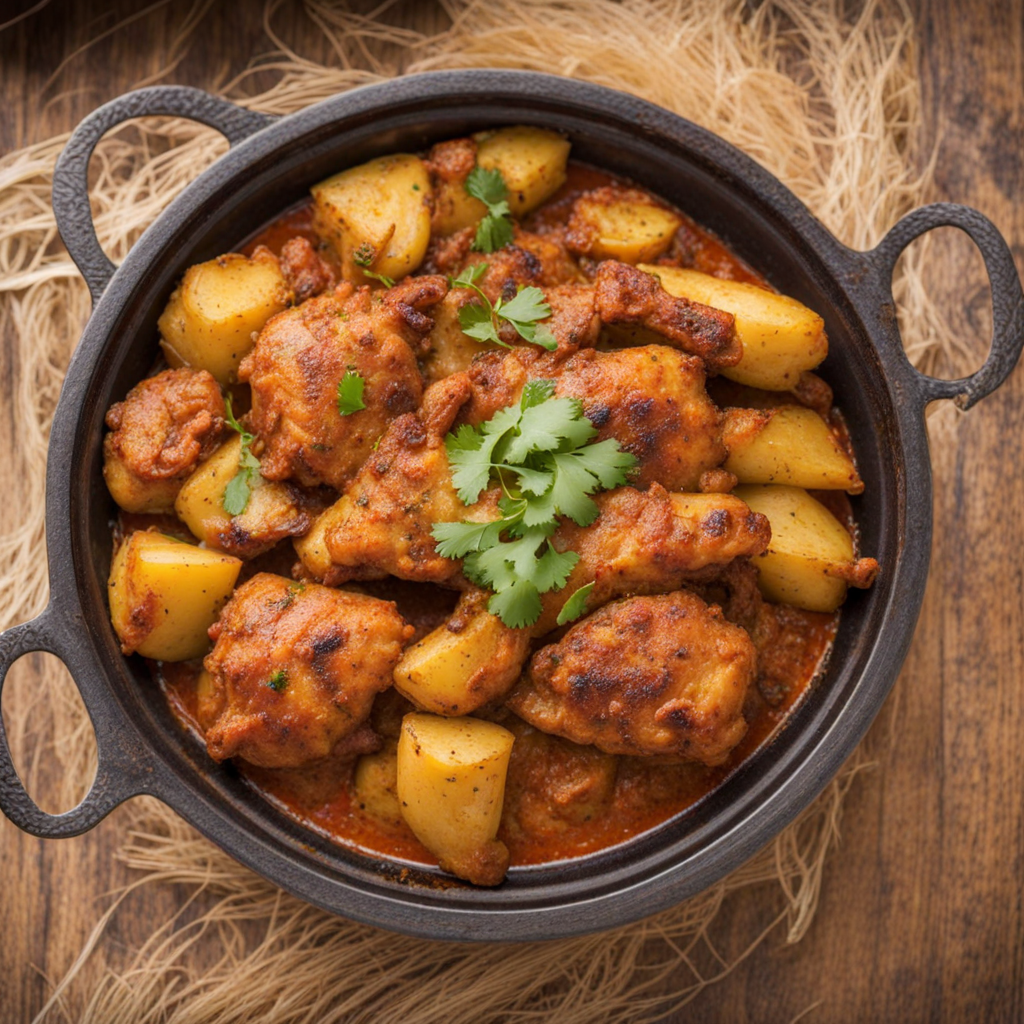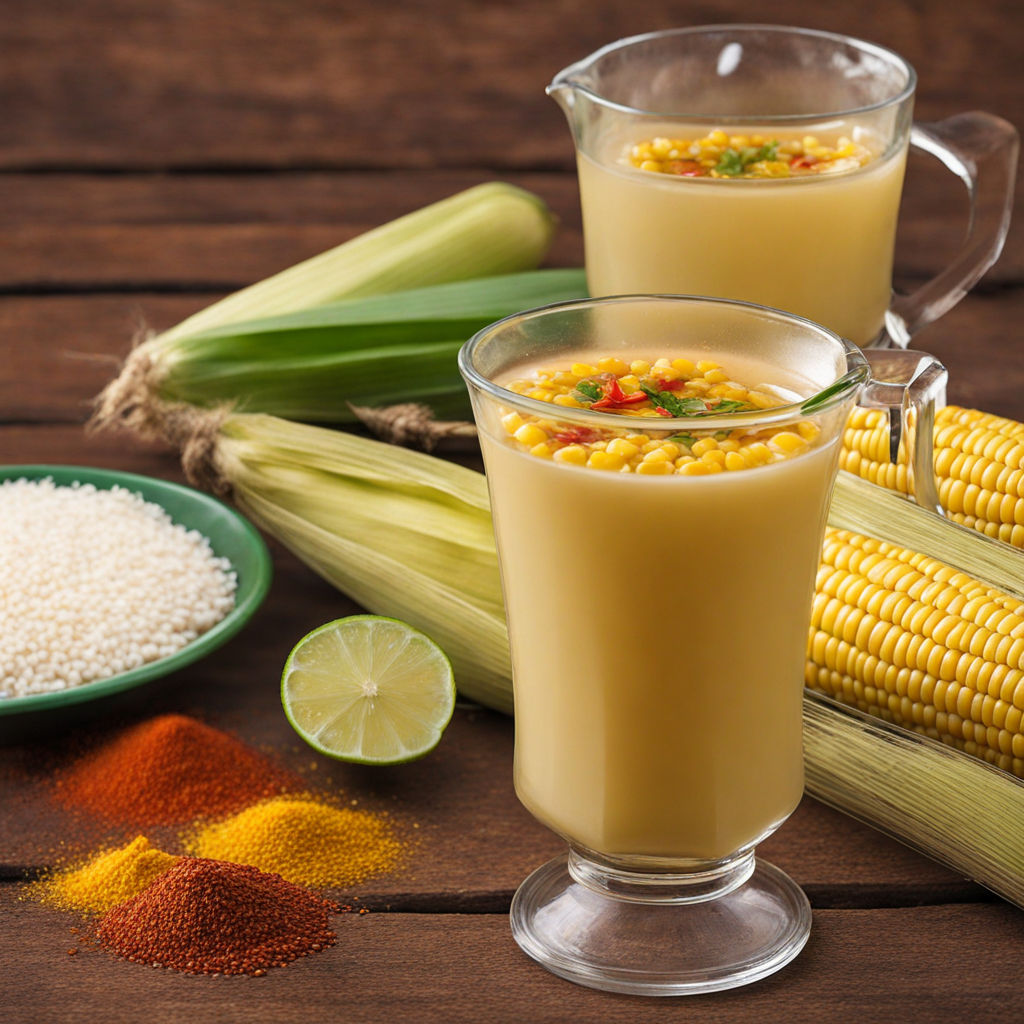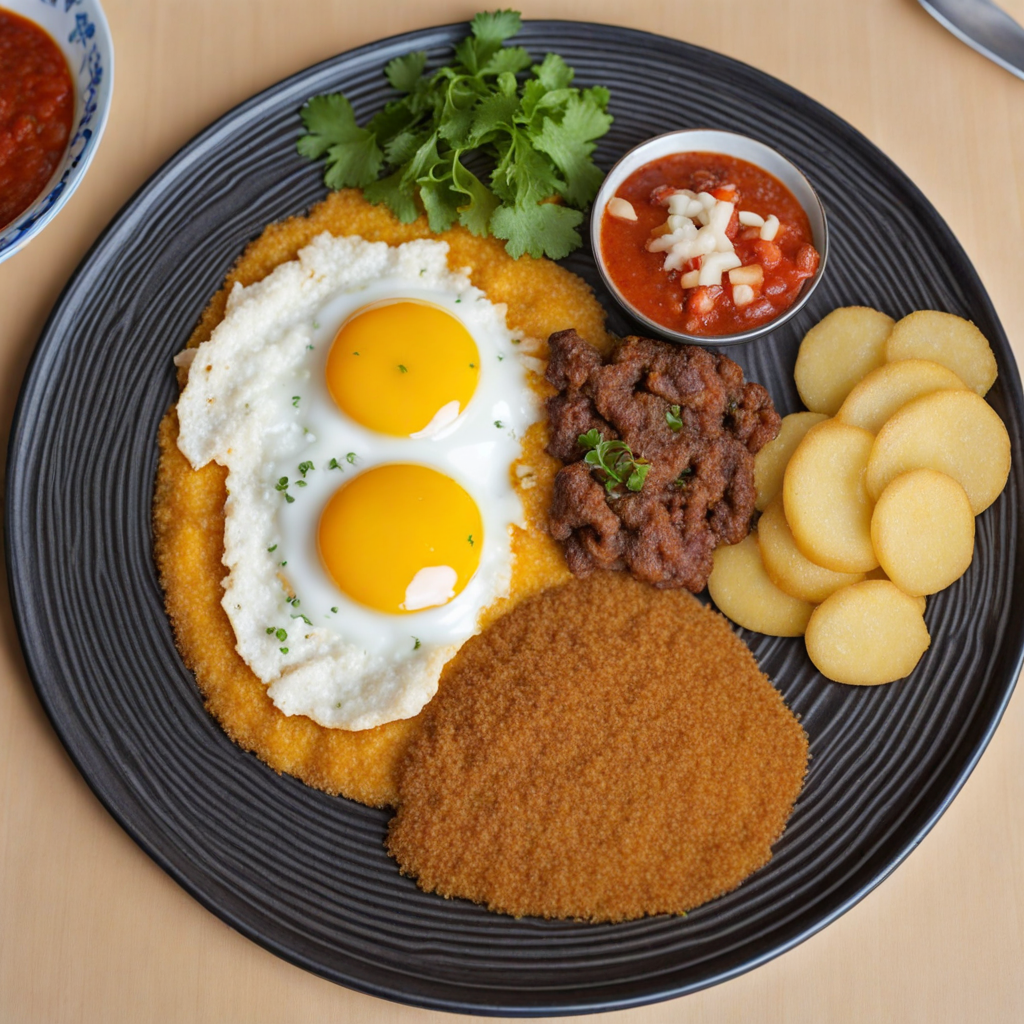Chicharrón de Cerdo
Chicharrón de Cerdo is a beloved Bolivian dish that showcases the rich flavors and textures of pork. This dish typically consists of pork belly or pork shoulder that is marinated in a blend of spices, including garlic, cumin, and ají, a type of chili pepper. The marinating process not only infuses the meat with deep flavor but also makes it tender. Once marinated, the pork is slow-cooked until it becomes incredibly juicy, and then it is fried until the skin is perfectly crispy and golden brown. The contrast between the succulent meat and the crunchy exterior creates a delightful eating experience that is hard to resist. Often served as a main dish, Chicharrón de Cerdo is typically accompanied by traditional side dishes such as llajwa, a spicy salsa made from tomatoes and peppers, and boiled potatoes or corn. This combination enhances the dish's flavor profile, with the spicy salsa providing a zesty kick that complements the rich, savory pork. It's common to see this dish served during festive occasions and gatherings, where it brings people together around a shared love of good food. Chicharrón de Cerdo is not just a meal but a cultural experience that reflects the heart of Bolivian cuisine. The dish evokes a sense of tradition, as it has been passed down through generations, with each family adding their unique twist. Whether enjoyed at a bustling market, a family gathering, or a local restaurant, savoring Chicharrón de Cerdo offers a tantalizing glimpse into Bolivia's culinary heritage, making it a must-try for anyone looking to explore new and exciting flavors.
How It Became This Dish
The History of Chicharrón de Cerdo in Bolivia Chicharrón de Cerdo, or pork cracklings, is more than just a beloved dish in Bolivia; it is a culinary emblem that encapsulates the nation’s history, culture, and identity. This savory treat, characterized by its crispy exterior and tender meat, has deep roots that intertwine with indigenous traditions, colonial influences, and modern gastronomic practices. #### Origins The origins of Chicharrón de Cerdo can be traced back to the pre-Columbian era when indigenous communities in the Andes region utilized every part of the pig, often raising them as a source of protein. The domestication of pigs occurred in various parts of the world, but in the Andean highlands, it was particularly significant due to the harsh climate and the need for resilient livestock. The pig became a staple, providing not only meat but also fat, which was essential for survival in the colder high-altitude regions. As Bolivian culinary traditions developed, the preparation of pork evolved into various forms, with Chicharrón emerging as a popular method of cooking. The process typically involves boiling fresh pork belly or other cuts to render the fat, followed by frying until crispy. This method not only enhances the flavor but also preserves the meat, extending its shelf life—an important consideration in a region where refrigeration was not historically available. #### Cultural Significance Chicharrón de Cerdo holds a significant place in Bolivian cuisine, often associated with celebrations, communal gatherings, and traditional festivities. It is a staple during major holidays, such as Christmas and New Year's Eve, when families gather to prepare and share meals. The dish is also featured prominently during the Feast of the Virgin of Socavón, a festival held in Oruro, where food vendors sell Chicharrón accompanied by llajwa, a spicy salsa made from tomatoes and locoto peppers. The significance of Chicharrón extends beyond mere sustenance; it serves as a social connector. Families often come together to prepare the dish, engaging in lively conversations and storytelling, reinforcing social bonds and cultural heritage. The communal aspect of cooking and sharing Chicharrón fosters a sense of belonging and identity among Bolivians, irrespective of their regional differences. #### Development Over Time The development of Chicharrón de Cerdo over time reflects the broader changes within Bolivian society. The Spanish colonial period introduced new cooking techniques and ingredients, influencing how indigenous dishes were prepared. While the indigenous peoples had their methods of cooking meat, the Spanish brought with them the concept of frying food in its own fat, which further popularized the chicharrón style. In the 20th century, Bolivia underwent significant economic and social transformations, leading to urbanization and a shift in dietary habits. As people migrated to cities in search of better opportunities, traditional dishes like Chicharrón adapted to suit the fast-paced urban lifestyle. Street vendors began offering chicharrón as a quick, affordable snack, making it accessible to a wider audience. This shift not only preserved the dish but also allowed it to evolve, incorporating regional variations and accompanying dishes. For instance, in the highlands, Chicharrón is often served with mote (hominy) and a variety of pickled vegetables, reflecting the agricultural practices of the region. In contrast, in the lowland areas, it may be accompanied by rice or yuca, showcasing the diverse agricultural products of Bolivia. This adaptability has allowed Chicharrón de Cerdo to maintain its relevance in a rapidly changing culinary landscape. #### Contemporary Culinary Scene Today, Chicharrón de Cerdo has found its rightful place in Bolivia’s contemporary culinary scene while remaining rooted in tradition. Chefs and home cooks alike experiment with the dish, introducing modern twists that appeal to younger generations. Fusion cuisine has brought new flavors and techniques into the mix, as chefs incorporate elements from international cuisines while honoring traditional practices. Social media has played a significant role in the resurgence of traditional dishes like Chicharrón. Platforms like Instagram and Facebook have allowed Bolivians to share their culinary creations, showcasing regional variations and family recipes. Food bloggers and influencers highlight the importance of Chicharrón not only as a delicious dish but also as a cultural artifact, ensuring that future generations appreciate its history. Moreover, Chicharrón de Cerdo has become a symbol of national pride, often featured in culinary festivals and competitions that celebrate Bolivian gastronomy. Events dedicated to traditional foods emphasize the importance of preserving culinary heritage, while also encouraging innovation. The dish has transcended its humble beginnings, becoming a focal point in discussions about Bolivian identity and cultural heritage. #### Conclusion Chicharrón de Cerdo is more than just a dish; it is a representation of Bolivia's rich history and cultural diversity. From its indigenous origins to its place in contemporary cuisine, Chicharrón reflects the resilience and adaptability of Bolivian culinary traditions. As it continues to evolve, it remains a cherished part of family gatherings and celebrations, embodying the spirit of community and togetherness that is so integral to Bolivian culture. In every crunchy bite, there lies a story—a connection to the past, a celebration of the present, and a promise for the future.
You may like
Discover local flavors from Bolivia


